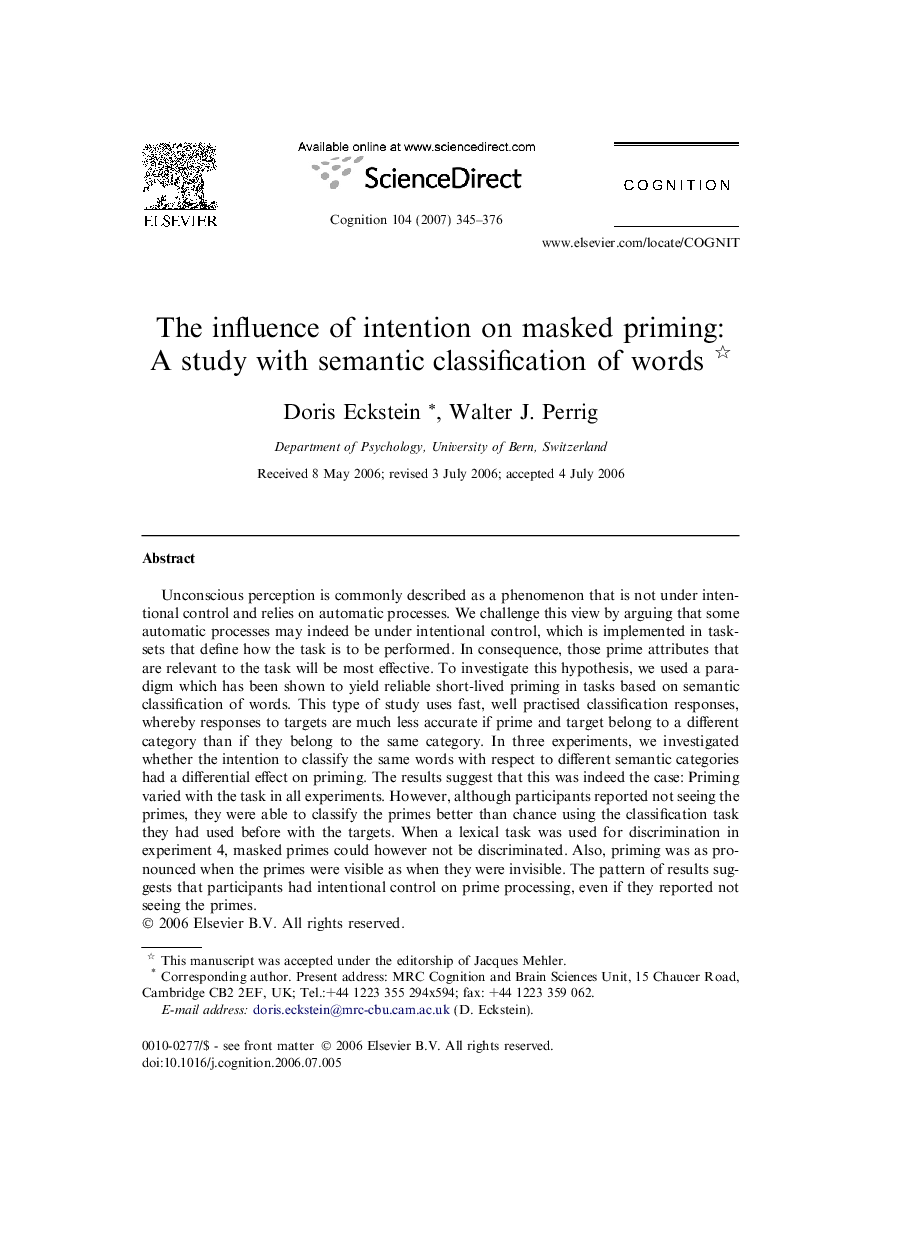| Article ID | Journal | Published Year | Pages | File Type |
|---|---|---|---|---|
| 927462 | Cognition | 2007 | 32 Pages |
Unconscious perception is commonly described as a phenomenon that is not under intentional control and relies on automatic processes. We challenge this view by arguing that some automatic processes may indeed be under intentional control, which is implemented in task-sets that define how the task is to be performed. In consequence, those prime attributes that are relevant to the task will be most effective. To investigate this hypothesis, we used a paradigm which has been shown to yield reliable short-lived priming in tasks based on semantic classification of words. This type of study uses fast, well practised classification responses, whereby responses to targets are much less accurate if prime and target belong to a different category than if they belong to the same category. In three experiments, we investigated whether the intention to classify the same words with respect to different semantic categories had a differential effect on priming. The results suggest that this was indeed the case: Priming varied with the task in all experiments. However, although participants reported not seeing the primes, they were able to classify the primes better than chance using the classification task they had used before with the targets. When a lexical task was used for discrimination in experiment 4, masked primes could however not be discriminated. Also, priming was as pronounced when the primes were visible as when they were invisible. The pattern of results suggests that participants had intentional control on prime processing, even if they reported not seeing the primes.
